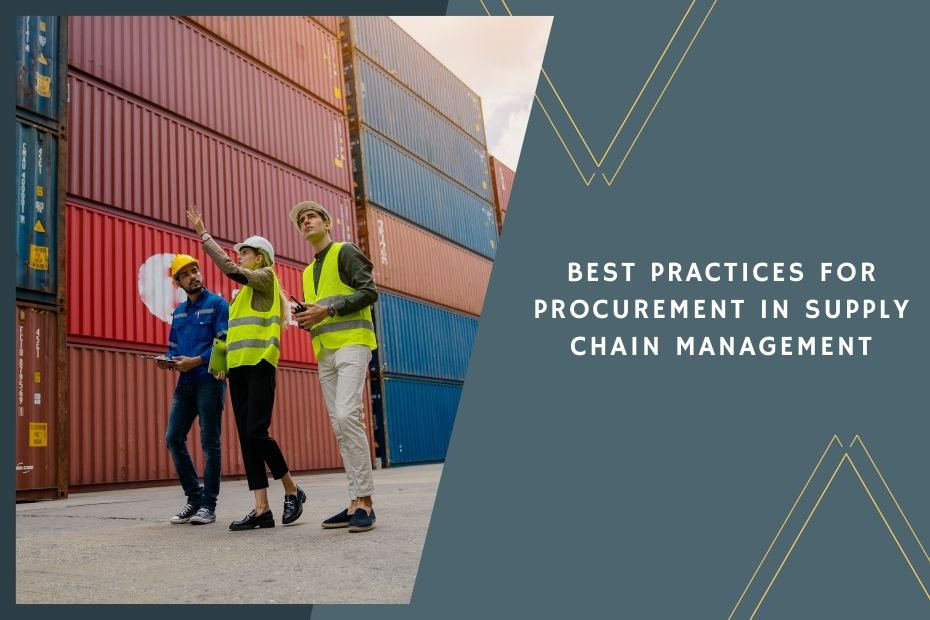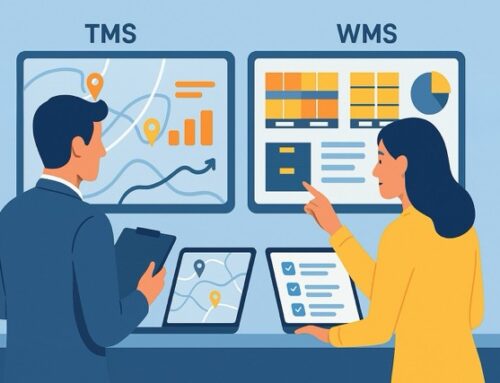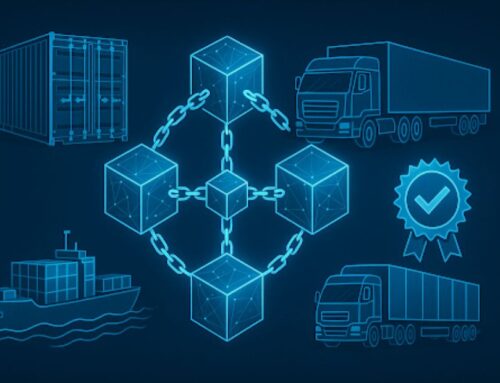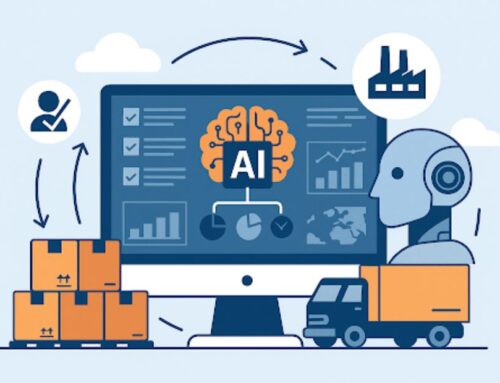In today’s competitive and interconnected global market, procurement plays an essential role in ensuring smooth, efficient, and resilient supply chains. From sourcing materials to managing supplier relationships, effective procurement is critical for maintaining cost control, mitigating risks, and driving overall supply chain success. Below, I will discuss best practices for procurement in supply chain management, focusing on strategic sourcing, digital transformation, risk management, sustainability, and supplier collaboration.
Strategic Sourcing: Building Long-Term Relationships
One of the cornerstones of effective procurement is strategic sourcing, which involves evaluating suppliers based on multiple factors, not just cost. While finding competitive pricing is important, procurement teams must consider quality, reliability, geographic proximity, and supplier innovation when making sourcing decisions.
Strategic sourcing fosters long-term partnerships with suppliers who align with the company’s business goals. Building these relationships enables better collaboration and can lead to innovative solutions, such as just-in-time delivery, where materials arrive precisely when needed, reducing the need for excess inventory. By focusing on supplier relationships, businesses can also negotiate better terms, ensuring that both parties are invested in long-term success.
This approach also provides more opportunities for flexibility during supply chain disruptions. When a strong relationship exists, suppliers are more likely to prioritize your orders in times of high demand or shortages. This is especially useful in industries like manufacturing, where raw material availability can significantly impact production schedules.
Leveraging Digital Procurement Technologies
The digital transformation of procurement is reshaping how organizations operate within the supply chain. Advanced technologies like artificial intelligence (AI), machine learning, and predictive analytics are now integral to optimizing procurement processes. Digital procurement systems automate routine tasks such as order processing, supplier selection, and invoice management, allowing procurement teams to focus on more strategic activities.
AI-powered tools can help with demand forecasting, identifying trends, and enhancing supplier risk assessments. For instance, predictive analytics can analyze historical data to predict future purchasing needs, allowing procurement teams to order materials in advance, preventing stockouts. Additionally, AI can streamline contract negotiations by automating the drafting and review process, ensuring compliance and reducing legal risks.
Implementing cloud-based procurement platforms also improves collaboration between suppliers and procurement teams. These platforms enable real-time data sharing, allowing both sides to monitor performance metrics, track order status, and identify issues before they escalate. Cloud platforms also enhance transparency, which is critical for maintaining accountability across the supply chain.
Enhancing Supplier Relationships Through Collaboration
Collaboration is key to fostering productive supplier relationships. By treating suppliers as strategic partners rather than just transactional vendors, procurement teams can build trust and improve communication. This creates a more resilient supply chain where suppliers are more willing to collaborate on innovation, cost reductions, and operational improvements.
A best practice for supplier collaboration is establishing regular review meetings to discuss performance metrics, potential risks, and improvement opportunities. These meetings provide both the procurement team and the supplier with a platform to share feedback and discuss any challenges they are facing. By maintaining open lines of communication, both parties can work together to resolve issues quickly, preventing disruptions.
In some industries, collaborative relationships with suppliers have led to co-innovation. For example, automotive manufacturers often work closely with key suppliers to develop new materials or components that improve performance or reduce environmental impact. Such collaboration results in a win-win situation for both parties, where innovation drives long-term success.
Implementing Risk Management Strategies
Procurement teams must be proactive in managing supply chain risks. In today’s global environment, risks such as natural disasters, geopolitical tensions, cyber threats, and supplier insolvency can severely disrupt supply chains. To minimize these risks, procurement teams need to implement robust risk management strategies, including diversification of suppliers, supplier financial monitoring, and risk assessment tools.
Diversifying the supplier base is one of the most effective risk mitigation strategies. By working with multiple suppliers across different regions, businesses can reduce their reliance on a single source and ensure that they have backup options in case of disruption. This approach also reduces the impact of region-specific challenges, such as natural disasters or trade restrictions.
Procurement teams should also use data analytics tools to monitor supplier performance and financial health continuously. These tools can provide early warnings of potential risks, allowing procurement teams to take corrective action before a disruption occurs. Regularly assessing suppliers based on key risk indicators such as financial stability, geopolitical exposure, and operational capacity is essential for maintaining a resilient supply chain.
Sustainability and Ethical Sourcing
Sustainability has become a crucial aspect of procurement, as businesses face growing pressure from regulators, consumers, and investors to reduce their environmental impact. Ethical sourcing practices ensure that materials are procured in a way that minimizes harm to the environment and respects human rights, contributing to corporate social responsibility (CSR) goals.
Sustainable procurement involves selecting suppliers based on their environmental practices, such as reducing emissions, using renewable energy, and minimizing waste. Procurement teams should also consider ethical labor practices and ensure that suppliers comply with fair labor standards, avoiding issues such as child labor or unsafe working conditions.
Companies that prioritize sustainable procurement often find that it can lead to cost savings in the long run. For example, sourcing materials that are produced using sustainable methods can reduce waste and energy consumption, lowering overall operational costs. Additionally, sustainable practices can enhance brand reputation and customer loyalty, as consumers increasingly prefer environmentally responsible companies.
Data-Driven Decision Making
Data is at the core of modern procurement strategies. By leveraging big data analytics, procurement teams can make informed decisions that improve supply chain efficiency, reduce costs, and mitigate risks. Data-driven decision-making involves analyzing historical purchasing data, market trends, supplier performance metrics, and external factors such as commodity prices and geopolitical risks.
Advanced analytics tools can also help procurement teams identify areas for cost optimization. For example, by analyzing spend data, procurement teams can identify opportunities for bulk purchasing discounts or negotiate better terms with suppliers based on volume. Additionally, real-time data analytics allow for continuous performance monitoring, ensuring that procurement strategies remain aligned with business objectives.
Continuous Improvement and Supplier Development
Procurement is not a one-time activity but a continuous process of improvement. Organizations should regularly review and refine their procurement strategies to adapt to changing market conditions, technological advancements, and supplier capabilities. Continuous improvement ensures that procurement teams stay competitive and can respond to new challenges as they arise.
One best practice is implementing supplier development programs, where businesses work closely with their key suppliers to improve their performance, reduce costs, and increase innovation. Supplier development programs often include training, shared resources, and joint problem-solving initiatives. By investing in supplier development, businesses can foster long-term relationships that benefit both parties.
Key Best Practices for Procurement in Supply Chain Management
- Strategic sourcing: Focus on long-term relationships and total cost of ownership.
- Digital technologies: Leverage AI, predictive analytics, and cloud platforms for efficiency.
- Supplier collaboration: Foster open communication and trust.
- Risk management: Diversify suppliers and implement continuous risk monitoring.
- Sustainability: Incorporate ethical and environmental sourcing practices.
- Data analytics: Use data-driven insights for decision-making.
- Continuous improvement: Invest in supplier development and regular process refinement.
In Conclusion
Effective procurement in supply chain management is vital for ensuring smooth operations, reducing costs, and enhancing competitiveness. By focusing on strategic sourcing, embracing digital tools, fostering supplier collaboration, and incorporating sustainability practices, companies can build resilient supply chains that are adaptable to the challenges of today’s global market. As procurement continues to evolve, businesses must stay ahead by adopting best practices that drive long-term success.









